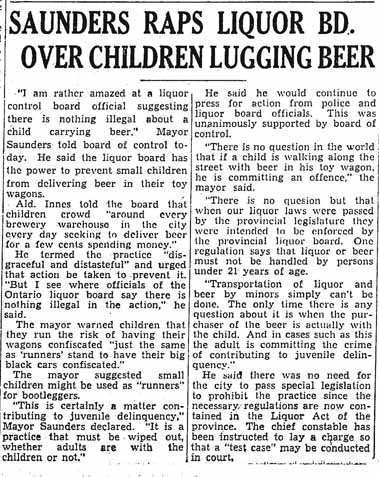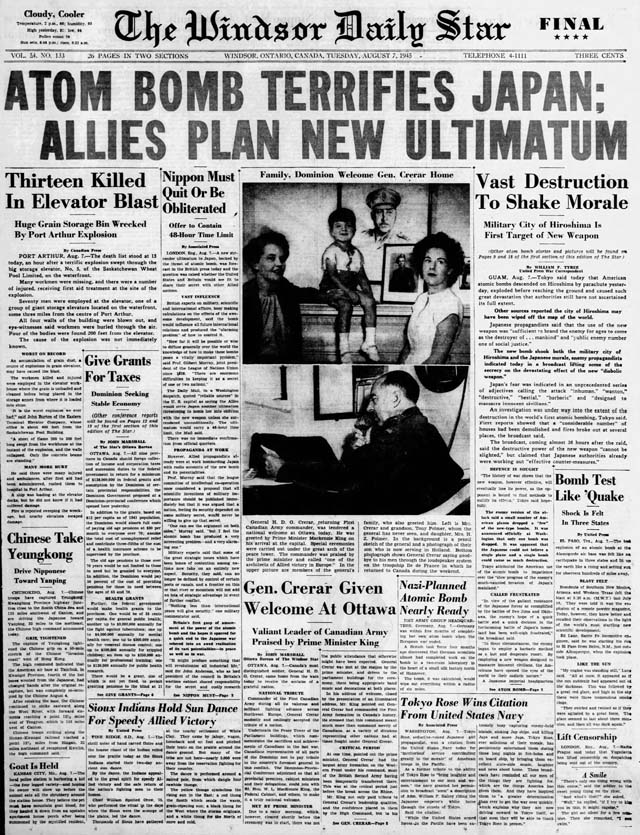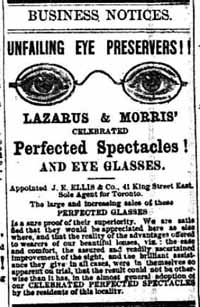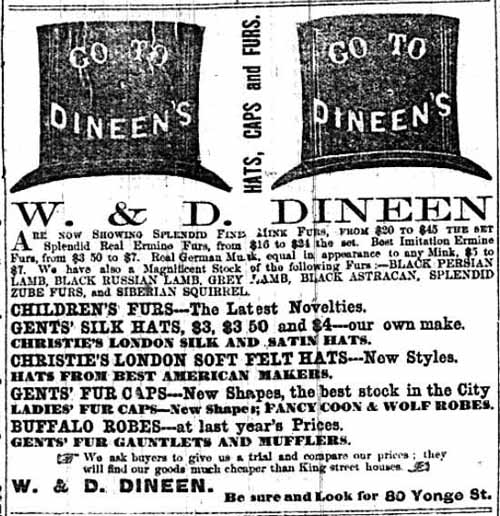This series looks at how Toronto’s press has covered historical events. This time out: the attack on Pearl Harbour 80 years ago, which opened up the Pacific theatre of the Second World War and led to the official entry of the United States into the conflict.

Globe and Mail, December 8, 1941.
Excerpts from the Globe and Mail‘s December 8, 1941 editorial:
Yesterday was a fateful day which may well be the turning point of the war, now in truth a world conflagration. President Roosevelt has been fighting against a divided national opinion. Japan has consolidated it. The might of the world’s greatest nation is forced into the balance with that of the other free peoples. The result will not be in doubt…
Now it will be understood better how truly events shape our destiny. The United States and Canada have not established mutual defense relations without forethought. All North America is not on a war-footing heedlessly. The creation of an air route to Alaska and the establishment of air and naval nases almost to the edge of Asia have anticipated this day…
It will be a total war for every man and woman who can help. It will mean in reality a total war for Canada, whose southern boundary, for war purposes, will no longer exist.
The United States could have escaped its responsibility at a price, by sacrificing the welfare of China. But China’s valiant resistance has appealed to the inner heart of a nation which abhors injustice brutally administered. China can now be of good cheer. Japan has sealed her own doom. The day of totalitarian aggression is nearer its end.
Globe and Mail, December 8, 1941.
A sampling of reactions from missionaries and the city’s Chinese community, whose celebrations would be joyous when the Japanese surrendered four years later.

Toronto Star, December 8, 1941.
Toronto Star, December 8, 1941.
Maps of the Pacific were a key part of coverage in Toronto and elsewhere. The Star‘s was one of the simpler ones.
Toronto Star, December 8, 1941.
Toronto Star, December 8, 1941.
Photos of Allied bases in the Pacific. The picture in the bottom middle of this spread depicts Canadian soldiers entering Hong Kong a few weeks earlier. That day, the Battle of Hong Kong began.
Toronto Star, December 8, 1941.
Never mind Christmas, I imagine the switchboards were overwhelmed with calls to the West Coast once the news of the attack filtered through the city.
Star financial editor Main Johnson assessed the effects of a war with Japan on North American economies. He predicted a further increase in industrial war production and rationing of gasoline and consumer goods. On the potential of supplies being cut off from the US and UK, Johnson predicted that after some hiccups, “the eventual result will probably be an even closer economic and industrial co-operation between Canada and our southern neighbour.”
Financial Post, December 13, 1941.
Elsewhere in the local financial press, the Financial Post saw the attack as the motivation needed to implement conscription. A plebiscite held in April 1942 saw Canadians outside of Quebec vote heavily in favour of conscription. Prime Minister William Lyon Mackenzie King, sensitive to the tensions that tore apart national unity a quarter-of-a-century earlier, took his famous stance of “not necessarily conscription, but conscription if necessary.” His delay tactics worked until 1944.
Cartoon by Les Callan, Toronto Star, December 9, 1941.
The first Star editorial cartoon about the attack and declaration of war appeared on December 9.
Honolulu Star-Bulletin, December 7, 1941.
For comparison to Toronto’s coverage, here’s a front page from Honolulu on the day of the attack…
Los Angeles Times, December 8, 1941.
…and an editorial with a snappy title from the West Coast.































![pm 1945-08-07 front page]](https://jamiebradburnwriting.files.wordpress.com/2020/08/pm-1945-08-07-front-page.jpg)




